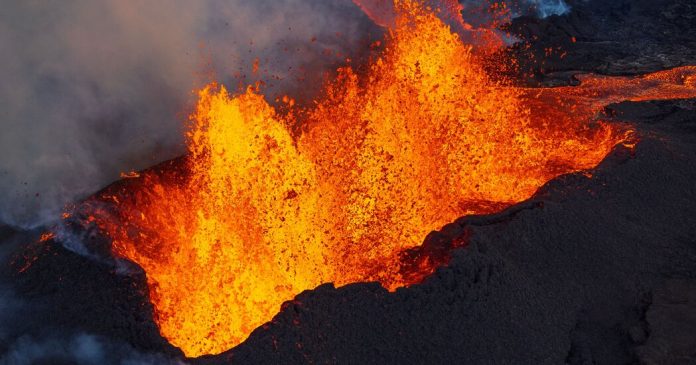In 1963, a geophysicist named John Tuzo Wilson proposed that the islands, that are coated with layers of volcanic stone, sit above a magma plume, which types when rock from the deep mantle bubbles up and swimming pools under the crust. This “scorching spot” frequently pushes towards the floor, generally bursting by way of the tectonic plate, melting and deforming the encompassing rock because it goes. The plate shifts over hundreds of thousands of years whereas the magma plume stays comparatively nonetheless, creating new volcanoes atop the plate and leaving inactive ones of their wake. The outcomes are archipelagoes just like the Hawaiian-Emperor seamount chain and components of the Iceland Plateau.
The new spot idea gained broad consensus within the subsequent a long time. “There isn’t any different idea that is ready to reconcile so many observations,” stated Helge Gonnermann, a volcanologist at Rice College.
Some confirming observations got here comparatively just lately, within the 2000s, after scientists started inserting seismometers, which measure terrestrial vitality waves, on the ocean flooring. John Orcutt, a geophysicist on the College of California, San Diego, who helped lead that analysis, stated that the seismometers had offered an X-ray of the magma plume rising beneath Hawaii. The devices have been in a position to precisely learn the route and velocity of the magma’s movement; the outcomes pointed resoundingly towards the presence of a scorching spot.
This scorching spot has in all probability been fomenting volcanic exercise for tens of hundreds of thousands of years, though it arrived in its present place below Mauna Loa solely about 600,000 years in the past. And so long as it stays there, Dr. Orcutt stated, it’s going to reliably produce volcanic exercise. “Few issues on Earth are so predictable,” he added.
Nearer to the floor, predicting when, the place and the way intense these eruptions will likely be turns into tougher, regardless of the profusion of seismometers and satellite tv for pc sensors. “The deeper you go, the extra clean the conduct will get,” Dr. Orcutt stated. “By the point you get this interface between rock and molten rock and the ocean, the magma tends to return out sporadically.”


